Body length: 4.5–14.5 mm.
Eyes: eye interommatidial setaeseta:
a sclerotized hair-like projection of the cuticle
absent, eye entire/shallowly emarginateemarginate:
notched at the margin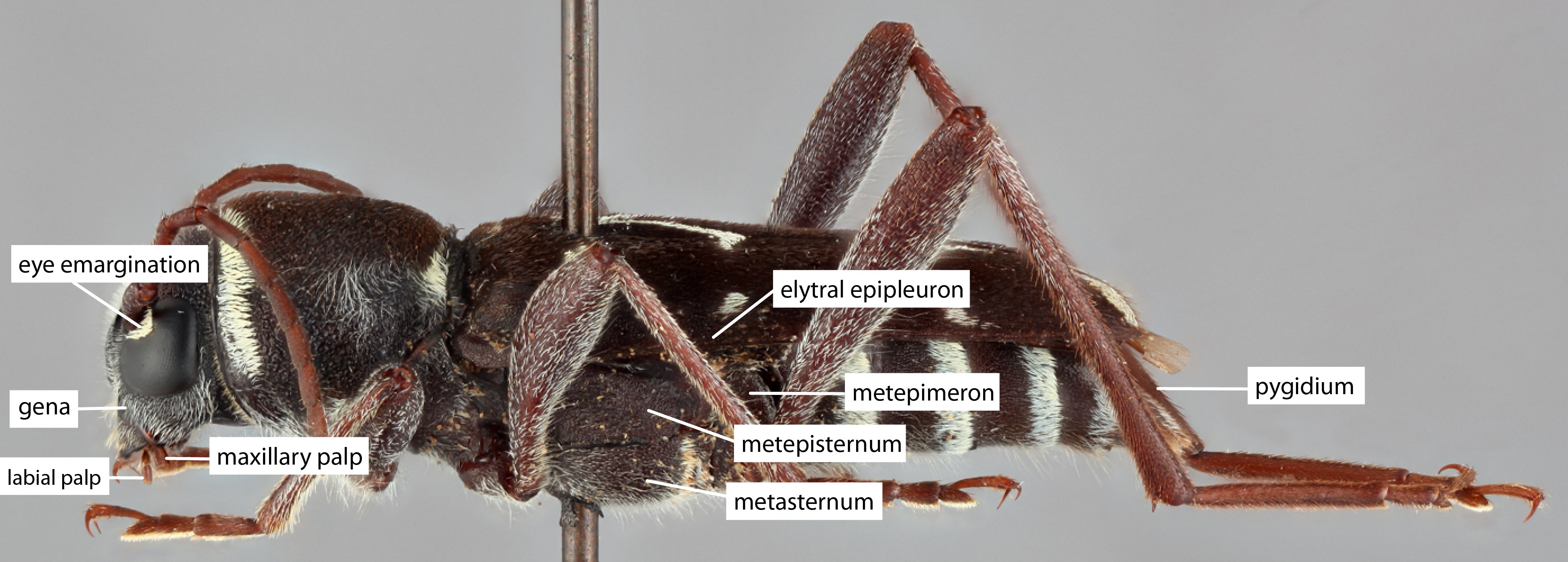 , eye ommatidial density fine.
, eye ommatidial density fine.
Antennaeantenna:
in larval and adult insects, paired segmented appendages, borne one on each side of the head, functioning as sense organs and bearing a large number of sensilla
: antennal length reaches between basebase:
the part of any appendage or structure that is nearest the body
and end of elytraelytron:
the leathery forewing of beetles, serving as a covering for the hind wings, commonly meeting opposite elytron in a straight line down the middle of the dorsum in repose
or reaching/surpassing end of body, antennal flagellar segments elongateelongate:
much longer than wide
, scapescape:
the first proximal segment of the antenna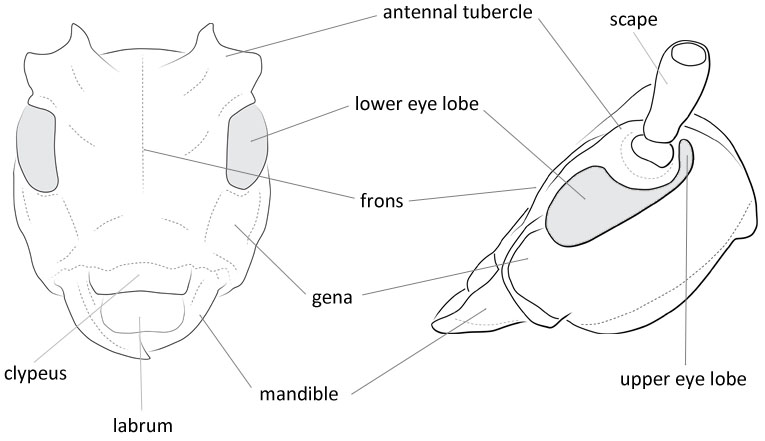 smooth/punctate at apexapex:
smooth/punctate at apexapex:
end of any structure distad to the base
, antennal segment 3 > scapescape:
the first proximal segment of the antenna .
.
Pronotumpronotum:
the upper and dorsal part of the prothorax
: pronotumpronotum:
the upper and dorsal part of the prothorax
shape longer than wide, pronotumpronotum:
the upper and dorsal part of the prothorax
lateral armature absent.
Prosternum: prosternal processprosternal process:
a posterior extension of the prosternum between the coxae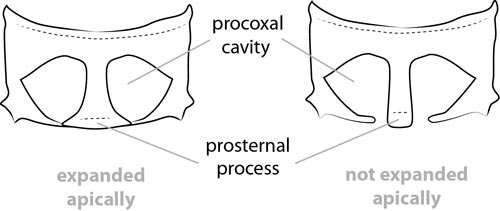 dilated at apexapex:
dilated at apexapex:
end of any structure distad to the base
, procoxal cavities open posteriorly.
Elytraelytron:
the leathery forewing of beetles, serving as a covering for the hind wings, commonly meeting opposite elytron in a straight line down the middle of the dorsum in repose
: elytral length reaching or close to end of abdomen, elytral apicesapex:
end of any structure distad to the base
emarginate or with tooth or spinespine:
a protuberance with an acute (sharp) distal end
, elytral color pattern present.
Legs: visible tarsomerestarsomere:
subdivision or article of the tarsus, usually numbering from two to five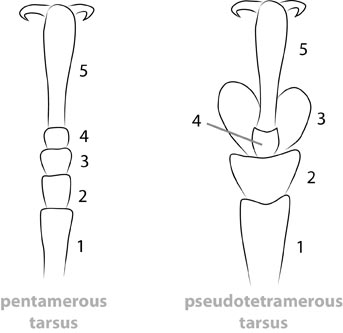 : 5, femora clavateclavate:
: 5, femora clavateclavate:
thickening gradually toward the tip
, rarely slender, protibial spursprotibial spur:
sclerotized spine(s) located at the distal tibia; can be single, double, or absent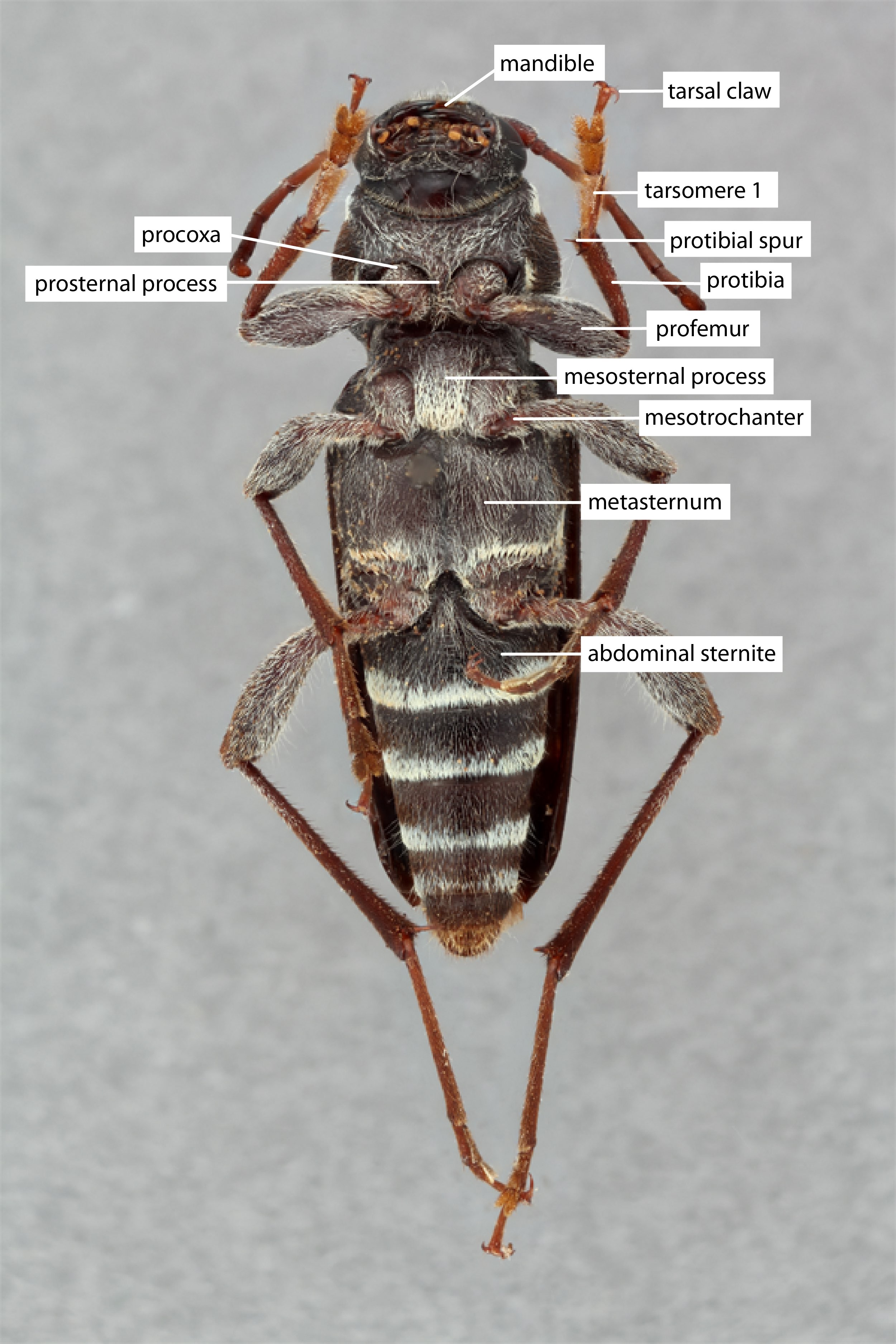 : 2, tarsal clawstarsal claw:
: 2, tarsal clawstarsal claw:
usually paired claws of the pretarsus, at the distal end of the leg simple.
simple.
Body elongateelongate:
much longer than wide
. Antennaeantenna:
in larval and adult insects, paired segmented appendages, borne one on each side of the head, functioning as sense organs and bearing a large number of sensilla
thin, almost reach elytral apexapex:
end of any structure distad to the base
(male) or slightly shorter (female). Pronotumpronotum:
the upper and dorsal part of the prothorax
oblong, with median longitudinal carinacarina:
an elevated ridge or keel, not necessarily high or acute
. Elytraelytron:
the leathery forewing of beetles, serving as a covering for the hind wings, commonly meeting opposite elytron in a straight line down the middle of the dorsum in repose
elongate, with straight or smooth cut at apexapex:
end of any structure distad to the base
, and produced under angle; covered with light-colored adherent hairs forming characteristic pattern of longitudinal oblique bands (stripes). Legs very long, slender; hind femora reach or slightly short of elytral apexapex:
end of any structure distad to the base
(Cherepanov 1988).
Differs from those of other species in epistomaepistoma:
the oral margin or sclerite directly behind the labrum, e.g., anteclypeus, clypeus or frontoclypeus
anterolaterally truncatetruncate:
cut off squarely at the tip
, without medial notch near clypeusclypeus:
that part of the insect head below the frons, to which the labrum is attached anteriorly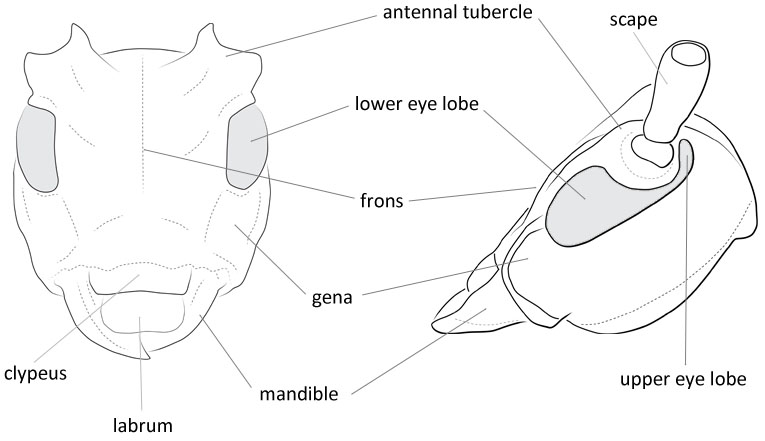 , and generally protrudes forward. Sides of head with one ocellus each near antennal basebase:
, and generally protrudes forward. Sides of head with one ocellus each near antennal basebase:
the part of any appendage or structure that is nearest the body
. Pronotal shield leathery, white, covered with longitudinal coarse wrinkles. Thoracic legs poorly developed, brownish-rust, apically sclerotized. Locomotory ampullae convex, developed on abdominal segments I to VII, with longitudinal striatestriate:
marked with parallel, fine, longitudinal, impressed lines or furrows
wrinkles, without transversetransverse:
broader than long
grooves (Cherepanov 1988).
Demonax, Chlorophorus, Grammographus
In Rhaphuma, the first metatarsomere is longer than the remaining segments combined. Demonax has spines on antennomeresantennomere:
a subunit of the antenna, including the scape, pedicel, and flagellomeres
3 and 4.
Australasia, Indomalaya, Palearctic
broadleaf; Abies, Larix, Picea, Tsuga, Pinus; Juniperus
219 species, 4 additional sspp. Conifers: R. xenisca, R. diminuta, R. gracilipes
Rhaphium White, 1855
Raphuma Thomson, 1861
Arcyphorus Chevrolat, 1863
Arcyophorus Gemminger & Harold, 1872
Rhaphuma Pascoe, 1858